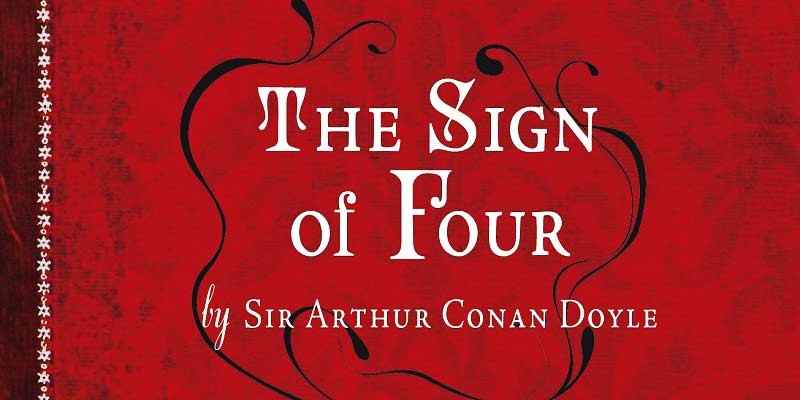On its first magazine appearance, the novel was titled The Sign of the Four, later it left the ‘the’ in the title.
In his memoirs, Sir Arthur Conan Doyle describes how he was commissioned to write the story – The Sign of Four – over a dinner at the Langham hotel with Joseph M Stoddart, managing editor of Lippincott’s on 30 August 1889.
Stoddart’s first idea was to produce an English version of his magazine with local, British contributors. In the end, only Doyle, with typical professionalism and efficiency, delivered his copy on time for its British publication in February 1890.
On its first magazine appearance, the novel was titled The Sign of the Four, following the description of the fatal symbol of murder in the text of the story. Thereafter, during several second serialisations in a variety of regional journals, the novel became known as The Sign of Four.
The influence of The Moonstone is unmistakable from the moment Holmes’s client, Mary Morstan, presents herself in Baker Street. Her father, an Indian army captain, has gone missing. As a second puzzle, she reports that over the last several years, on 7 July, she has received six pearls in the mail from an unknown source. Mary Morstan can offer the great detective only one clue, a map of a fort found in her father’s desk, with the names of three Sikhs, and a certain Jonathan Small. It is, of course, enough.
The story that Holmes swiftly unravels will involve some potent aspects of India in all its mystery and romance: the “mutiny” of 1857; stolen jewels from Agra; and a Sikh plot. On only his second outing in a full-length novel, Holmes is on top form throughout, stimulated by injections of cocaine and his celebrated deductive method (“How often have I said to you that when you have eliminated the impossible, whatever remains, however improbable, must be the truth?”) Here, unmistakably, is the voice of the master.
Conan Doyle had stumbled on the idea of the brilliant detective and his stolid sidekick (a variation on a theme best known to literature in a double act like Don Quixote and Sancho Panza) in A Study in Scarlet (1888). In The Sign of Four he deepens the Holmes-Watson relationship and has the good doctor (also the narrator) fall in love with Mary Morstan (“A wondrous subtle thing is love,” declares Watson). They will eventually get married.
As a novel about a crime, The Sign of Four is inferior to The Moonstone, though superbly constructed and compelling, complete with poison darts, a disputed legacy, and an exciting chase down the Thames. It also marks the reappearance of the “Baker Street Irregulars” and an important step in the evolution of Holmes and Watson, the most successful and popular literary duo in Victorian magazine fiction.
Like its prequel, A Study in Scarlet, published in 1888, The Sign of the Four was not an overnight success. It was Conan Doyle’s Sherlock Holmes stories, published in the Strand magazine after 1890 that made Sherlock Holmes a literary immortal.





